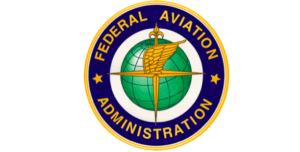
Some background: when drone registration (now declared unlawful by a federal appeals court) was enacted in December of 2015, one of the arguments against the program was that it could do little to promote real safety. The registration program required an ID number to be marked on the drone, but was only useful for enforcement activities after the fact, if the drone happened to be found.
More useful and desirable from a security and enforcement standpoint – and as a piece of the drone integration puzzle – is the idea of a remote identification system. Such a system would potentially allow drones to be identified and tracked while in flight. The ID and Tracking ARC was formed to bring industry stakeholders together in order to decide upon a framework for the technology.
The ARC’s charter calls for members to “discuss and provide recommendations to the FAA…regarding technologies available for the remote identification and tracking of UAS.” The ARC is supposed to:
- Identify, categorize and recommend available and emerging technologies for the remote identification and tracking of UAS.
- Identify requirements for meeting the security and public safety needs of law enforcement, homeland defense, and national security communities for remote identification and tracking.
- Evaluate the feasibility and affordability of the available technical solutions, and determine how well they address the needs of law enforcement and air traffic control communities.
Some in the industry feel that the ARC may be swayed to adopt technologies developed by one of the ARC members. However, the 74 member group represents a very broad base of stakeholders. Members range from major drone manufacturers of all types like Northrup Grumman, DJI, Insitu, and PrecisionHawk to drone platforms including AirMap and Skyward. The list also includes a long list of large corporate enterprises – both drone-related businesses and drone customers; advocacy groups like AUVSI and the Commercial Drone Alliance, research institutions, and government and law enforcement agencies. With so many members, the ARC may have difficulty reaching a conclusion, but they will certainly hear multiple sides of the issue.
The ARC is significant, having the potential to affect every drone operator and manufacturer. Decisions made by this group could influence regulation that defines how much information is gathered about drone operators themselves, their clients and their operations. More positively, it could help move drone integration – and commercial applications – forward. “Eventually the recommendations it produces could help pave the way for drone flights over people and beyond visual line of sight,” says the FAA.

Miriam McNabb is the Editor-in-Chief of DRONELIFE and CEO of JobForDrones, a professional drone services marketplace, and a fascinated observer of the emerging drone industry and the regulatory environment for drones. Miriam has penned over 3,000 articles focused on the commercial drone space and is an international speaker and recognized figure in the industry. Miriam has a degree from the University of Chicago and over 20 years of experience in high tech sales and marketing for new technologies.
For drone industry consulting or writing, Email Miriam.
TWITTER:@spaldingbarker
Subscribe to DroneLife here.